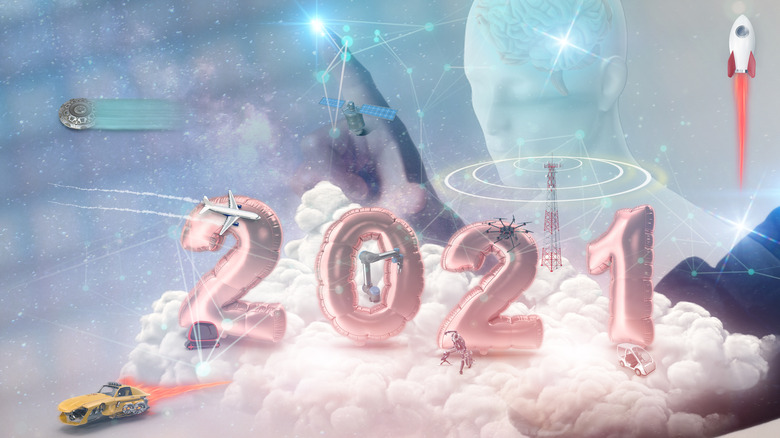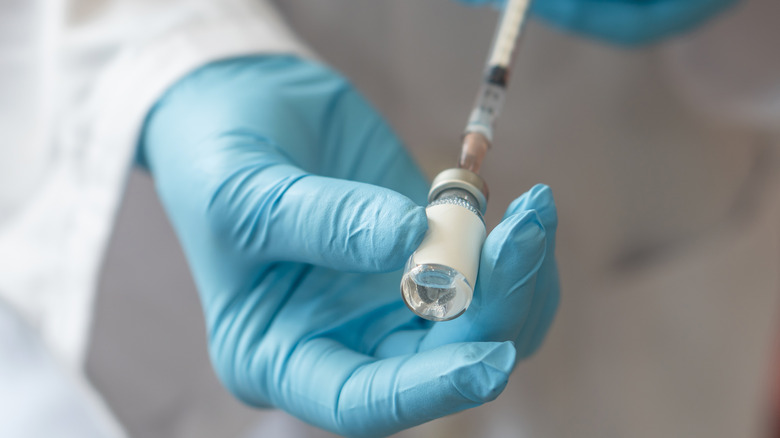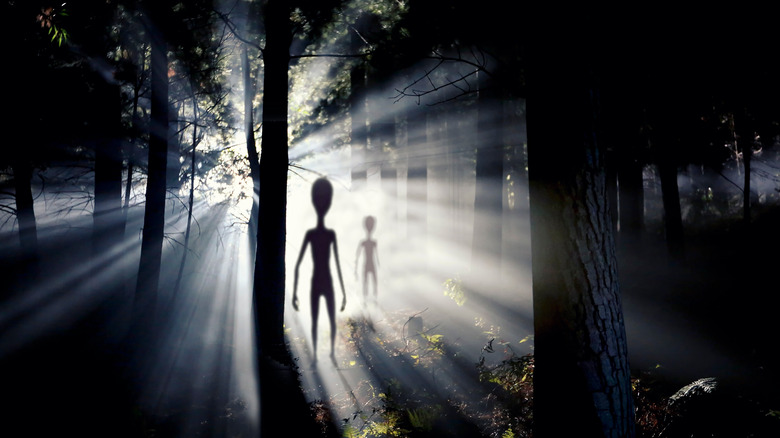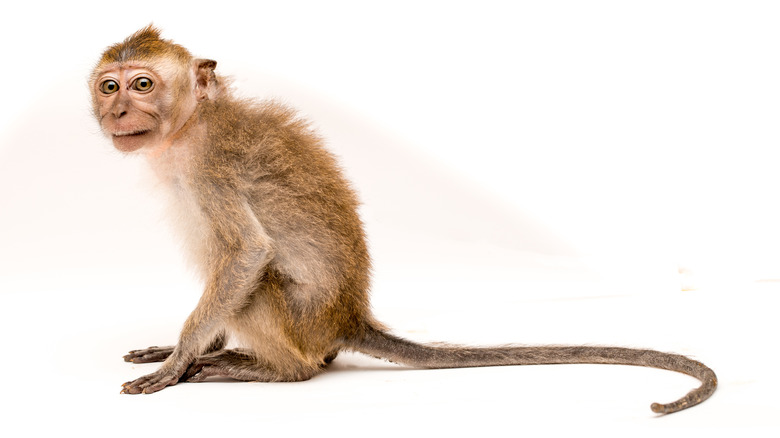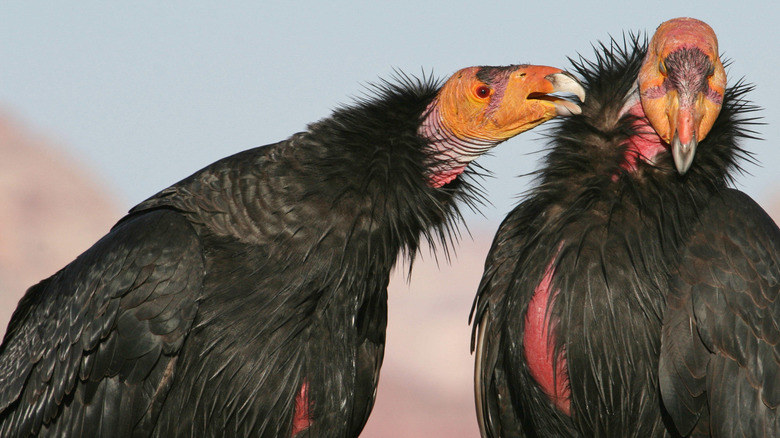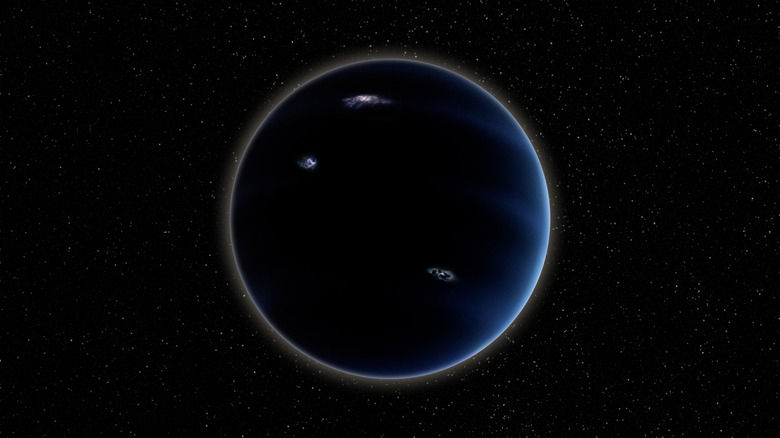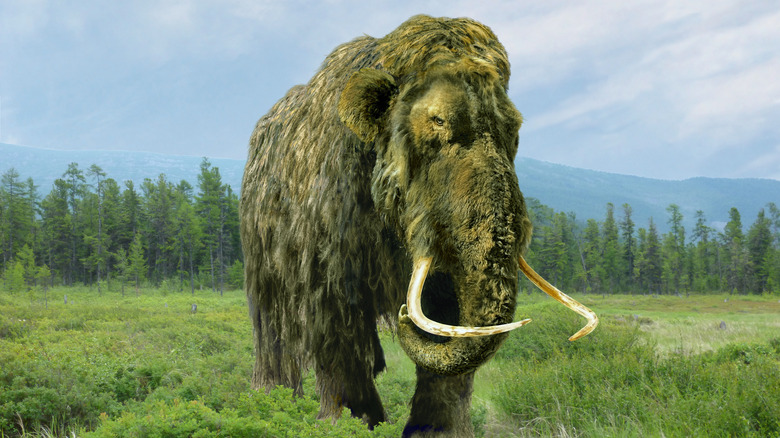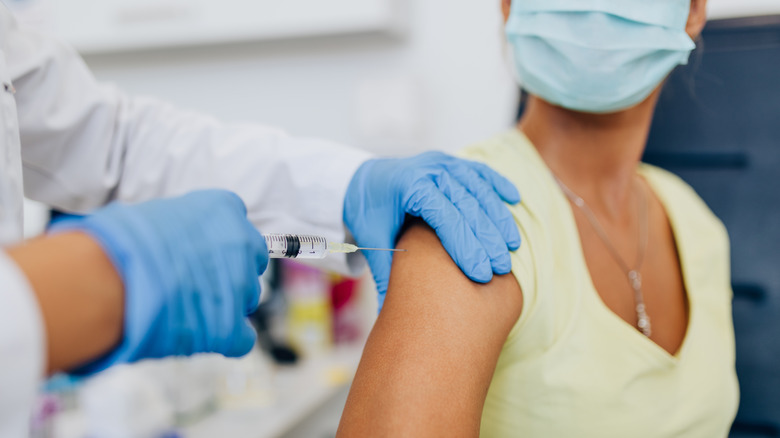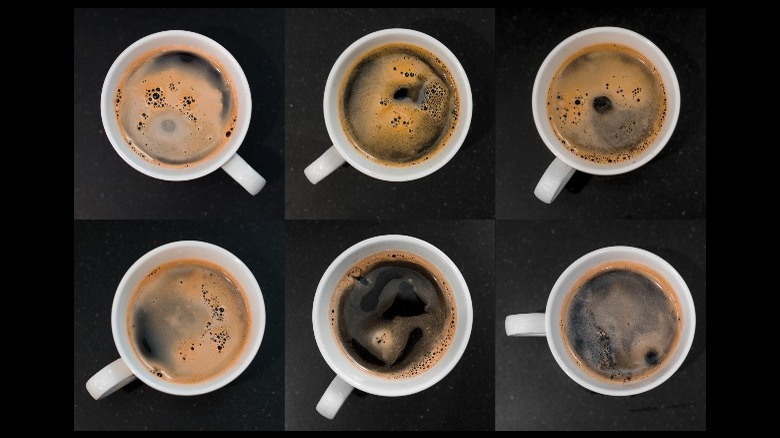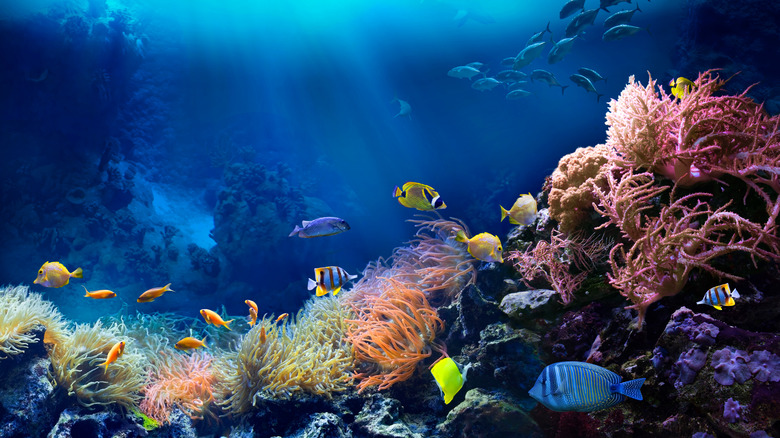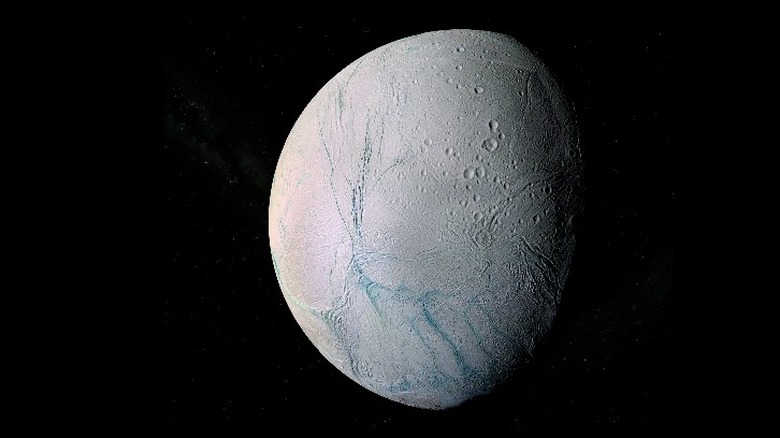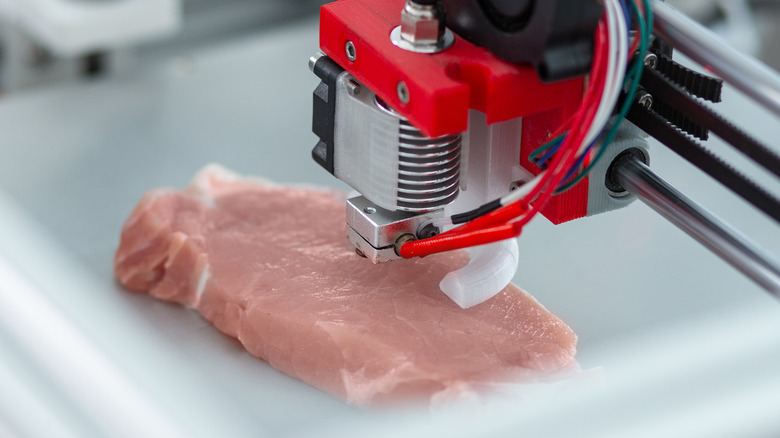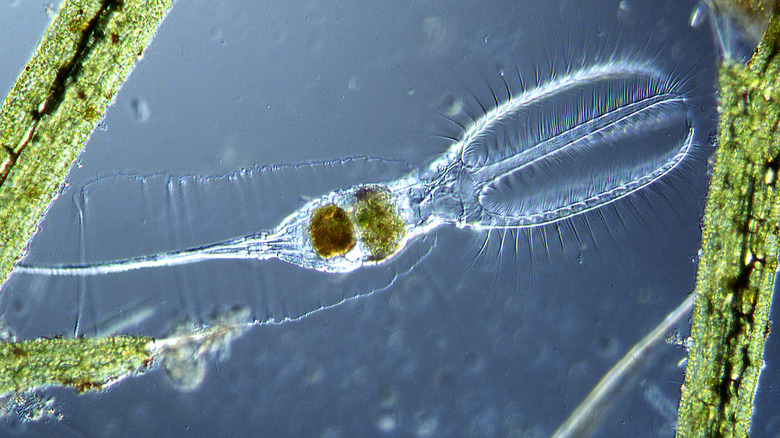The Biggest Scientific Discoveries Of 2021
2021 was full of COVID news. Vaccines, variants, infection rates, transmissibility — this is the science that dominated the news for most of the year. Meanwhile, though, behind all the COVID-y headlines, other science was happening. It's true! Scientific discovery and new research did not stall just because everyone else was preoccupied with the pandemic. Scientists were still discovering amazing things, making medical breakthroughs, and teaching monkeys how to play Pong with their minds while the rest of the world was busy arguing about vaccines and whether or not asking someone to wear a mask for five minutes goes against everything America stands for.
There was a lot of amazing research in 2021, way too much to put in one article, so this list includes the ones with the most "wow" power. "Wow" is a subjective measurement, though, and there were lots of runners-up, so if the scientific study that wowed you the most in 2021 doesn't appear on this list, know that it was almost certainly a reluctant decision.
A malaria vaccine
Merriam-Webster chose the word "vaccine" as the 2021 word of the year. It was really the COVID-19 vaccine that inspired this decision, even though the COVID vaccine was not technically a 2021 thing (AP notes that the first COVID-19 shot was delivered in 2020, not 2021). Still, it's been big talk ever since, though sadly the talk is more about politics than acknowledging that an end to the pandemic might actually be possible, you know, if only.
The COVID vaccine wasn't the only big vaccine news in 2021, though. According to Nature, 2021 also saw the approval of a vaccine that prevents malaria, a disease that kills around 400,000 people every single year. The RTS,S vaccine is not super impressive on paper — in small children, it probably only prevents 30% of severe malaria cases and that's after four doses. Still, malaria is such an insidious disease that even a 30% efficacy rate adds up to about 23,000 lives saved every year. That's significant enough that the World Health Organization has backed the vaccine and recommended it for distribution in countries with high rates of malaria.
Intelligent life is probably rare
Sorry sci-fi fans and everyone who has one of those "I Want to Believe" posters tacked to the office wall, but intelligent life is probably not that common. Heck, we really should have guessed this already just based on the fact that intelligent life on Earth isn't that common, even amongst humans. In March of 2021, scientists published a buzz-killing study in Astrobiology wherein they analyzed the statistical probability of intelligent life evolving on other worlds. According to their model, which is all math-y and complicated, the odds of intelligent life developing within the average lifespan of a planet like Earth are roughly 1,000,000,000,000 to 1.
Note that this doesn't mean there's not much chance of life on other planets, just that there's not much chance of intelligent life. So that thing you saw in the sky when you were 16? Weather balloon. Sorry.
Still, if it helps you not want to tear down your "I Want to Believe" poster, it's worth remembering that the universe is a big place. The Seti Institute estimates there are 300,000,000 habitable planets in our galaxy alone, and since there are two trillion galaxies just in the observable universe there's probably someone else out there somewhere. Sadly, though, it's unlikely they're ever going to cross the vast emptiness of space in order to find us.
Mind controlled monkey plays pong
Just in case you've always suspected that Elon Musk might be sort of evil, well, here's more fuel for that fire.
In April of 2021, Neuralink, Elon Musk's bizarre brain machine company, released a video of a monkey supposedly playing Pong with his mind. According to the Verge, the monkey was using a brain implant to control the game, but the way the company made the announcement wasn't exactly model science. There was no peer-reviewed paper in an accredited journal, just a video played at a live Neuralink event, much like a video one might play of a new model Tesla or the pyramid scheme that will make you rich just so long as you can find three grand to put down as your initial investment.
Without any real science to back it up, we really have no way of being sure that the video wasn't filmed with Elon Musk off camera actually controlling the game while the monkey watched the ball bounce back and forth. Also, no one has really said what became of the monkey after this whole weird experiment. Will he have a pong-playing implant in his brain forever? Or will he eventually end up on the dissection table, like so many other lab animals before him? Ultimately, though, it's a monkey playing Pong with its brain so whatever.
Girl condors don't need boy condors
The most obviously stupid thing about Jurassic Park was the whole "life finds a way" thing. You know, the idea that the scientists smart enough to recreate dinosaurs didn't realize that the frog DNA they were adding to the genetic mix might allow their reborn dinos the power of unisexual reproduction. Or, even the idea that unisexual reproduction could be a thing in a large, complex animal.
But guess what, unisexual reproduction is apparently a thing in a large, complex animal. Who knew. Well, according to National Geographic, science knew. This kind of reproduction — called parthenogenesis — mostly happens in insects and other invertebrates. But it does happen in other animals, too, in fact, 80 different vertebrates have been known to do it, including sharks, snakes, and lizards. It's not even unheard of in birds — evidently, chickens, turkeys, pigeons, quail, and finches have been known to do it, too, with varying levels of success. And now, condors. In October of 2021, researchers announced that two condors in a zoo breeding program had no DNA from the male condors that were thought to be their fathers. The only way to explain that finding is parthenogenesis.
Scientists think the phenomena might be more common than we think. After all, it's not like we go around DNA testing every offspring of every animal, so we're almost sure to be missing other examples of this happening.
The world's whitest paint could replace air conditioning
Everyone loves white whites, which is why we wash them separately from darks and use bleach even though we know that bleach is terrible for the planet. But extra-white whites are more than just a laundry preference. They can be immensely useful for other things, too, like ending the need for air conditioning.
In April of 2021, ACS Applied Materials and Interfaces announced that engineers at Purdue University had created the world's whitest paint. This stuff is so white that it reflects 98.1% of the sunlight that hits it. This is significant because if you painted a rooftop with the stuff, it would actually function as air conditioning. That's pretty awesome when you consider that air conditioning is responsible for about 12% of all home energy use, so if you painted a whole city with super white paint you'd cut back on an awful lot of emissions.
What no one is really talking about, though, is what super-white paint might do to human eyes if you covered a whole city with it. Snow only reflects like 80% of the sunlight that hits it, and we all know what happens to your eyes if you look at snow without sunglasses. While it would probably only be roofs covered with this paint, it's kind of hard not to wonder how many unfortunate people would be blinded after accidentally looking down from a helicopter or something.
Planet X might exist
In the 19th century, a crazy whackadoo self-proclaimed astronomer named Percival Lowell initiated a desperate and expensive search for the rogue planet he thought was orbiting the sun somewhere in the outer extremes of the solar system. Lowell also believed that there was a civilization on Mars and that Venus had spokes like a coronavirus, so no one really took him seriously. The theory of Planet X was based on the fact that Neptune has kind of a funky orbit, which some people thought could potentially be attributed to the gravitational pull of a much larger, distant planet. This was before anyone knew about Pluto, by the way.
Today, the idea that Planet X (also called Planet 9) exists is still kind of controversial. In 2016, researchers at Caltech published a study they said confirmed its existence. Some other scientists, though, went, "no, that's just observation bias." So the researchers tried again and in September of 2021, announced that their findings were not observation bias, and even went so far as to provide an educated guess about where we might actually be able to find the ninth planet.
The new study didn't convince everyone, though. There are still people who don't think there's a ninth planet out there, and we won't really know for sure if they're right until someone actually sees the elusive Planet X.
Scientists sequenced the DNA of a million-year-old mammoth
Another stupid thing about "Jurassic Park" was the idea that you could bring back an animal that went extinct millions of years ago using DNA you pulled out of a piece of amber. But alas, it does kind of seem like it might be kind-of-sort-of theoretically possible.
According to Nature, scientists were able to retrieve DNA from mammoth teeth they found in Siberian permafrost. The owner of these particular teeth lived around 1.6 million years ago, which makes the DNA the oldest to have ever been successfully sequenced.
Before you get excited about the future opening of Pleistocene Park, researchers don't plan to use the information to resurrect a mammoth. Not these researchers, anyway. Geneticists at Harvard Medical School have different ideas. In September of 2021, they got a $15 million grant to resurrect the woolly mammoth, which they claim could have a bunch of real-world benefits like helping restore the Arctic ecosystem and saving the endangered Asian elephant. Frankly, that all just sounds like a bunch of dumb excuses for doing something mind-bogglingly cool, but whatever.
A pan-coronavirus vaccine
Wait, isn't there already one of those? Nope ... the key part of the word here is "pan," which means that scientists have developed a vaccine that works not just on COVID-19 but on multiple other coronaviruses, too. This means science might be able to end new coronavirus pandemics before they start, and it may even be able to end ... wait for it ... the common cold. Or at least some of them (not all colds are caused by coronaviruses).
According to Technology Networks, scientists tried their new vaccine on mice and monkeys and found that it protected them from SARS-CoV-2 (the virus that causes COVID-19) and also from SARS-CoV-1 (the virus that causes SARS) and a bunch of similar bat coronaviruses.
The vaccine targets the part of the coronavirus that lets it stick to cell receptors inside the host. Because that part of the virus is common to a lot of different coronaviruses, targeting it makes it possible to create a vaccine that isn't just one shot for one disease. Since coronaviruses appear to be especially pandemic-causing, this is great news. And this technology may even have broader implications, like preventing you from ever again having an excuse to stay home from work because you "came down with a cold."
Synthetic coffee
Everyone loves coffee, except people who are weird. In fact, according to New Atlas, coffee is a huge industry — globally, coffee growers produce and distribute nearly 22 billion pounds of morning joe every single year. And demand is only expected to increase as more and more people devote substantial portions of their paychecks to overpriced pumpkin spice lattes and nonfat mochas.
This is great news for coffee growers, but it's not so great for the Earth. Coffee plants love the sun, so growers will need to deforest land in order to increase production. There are also questions about how sustainable coffee is — it uses a lot of water, it has to be transported long distances, and as the climate changes it's not going to be easy to find new places to grow it.
In September of 2021, scientists in Finland announced that they'd created coffee in a lab. And what's more, it "tasted similar" to actual coffee, which frankly isn't really that great of an endorsement (come back when it tastes "exactly" like actual coffee). The technology scientists developed to create their fake coffee uses cells from real coffee plants, but it also uses 94% less water and creates 93% less carbon emissions than coffee that comes from traditionally grown beans. And you may be able to find this "tastes similar to coffee" product on store shelves in about four years.
Probiotics might save coral reefs
The slow-motion death of the world's coral reefs is one of the greatest tragedies of climate change. Besides, you know, entire cultures losing their oceanside homes and eventual worldwide famine. Still, everyone agrees that coral reefs are a treasure, and as the climate warms it's become clear that the reefs will be one of the first major casualties.
In August of 2021, though, scientists announced that probiotics might help protect coral during a heatwave, much like they can help protect your large intestine after you eat sushi that sat around in the deli section for a couple of days more than it should have. According to Science News, researchers bathed aquarium coral in a bacterial soup and then exposed them to an artificial heatwave. The coral that got the probiotics survived the heatwave. Meanwhile, 40% of the unfortunate coral that got bathed in a useless saline solution died.
Unfortunately, this method of preserving species is really just damage control ... it doesn't do anything to address climate change, it just stops climate change from inflicting some small part of the horrible damage it's expected to inflict. Sadly, if other scientists don't come up with a way to reverse the bad things that are already happening to the Earth's climate, future scientific breakthroughs will all have to be about damage control.
Biodegradable packaging made from vegan spider silk
Biodegradable plastics have been a thing for a while, but a lot of consumers don't realize that the biodegradable cup or plastic bag they just tossed in the garbage can isn't going to biodegrade in a landfill. According to Phys.org, many of these products need to be composted in an industrial composting plant, and there isn't exactly one of those in every neighborhood.
In order to really make a dent in the world's ginormous plastics problem, manufacturers need to produce a product that's home compostable, so people aren't left wondering where they're supposed to send their biodegradable plastics or worse, just throwing them in the trash because it's all just too much trouble. Well, in June of 2021, scientists at the University of Cambridge announced they'd developed a polymer film that is basically artificial or "vegan" spider silk. They say the material is as strong as regular plastic and will break down in "most natural environments," like your backyard. Note that Phys.org does not say if these products will break down in a landfill — stuff that gets buried under mountains of other trash and has no exposure to sunlight or oxygen does not tend to break down as well as the stuff in a compost pile, biodegradable or not. So if this new vegan spider silk plastic does ever hit the shelves, you may not be able to toss it the way you toss the rest of your household waste.
Old people have better genes
Humans and Captain Jack Sparrow have been searching for the Fountain of Youth for almost as long as we've been capable of understanding our own mortality. As it turns out, the Fountain of Youth may have been inside us all along — in some of us, anyway.
In May of 2021, researchers at the University of Bologna in Italy compared the DNA of people older than 105 to the DNA of healthy people in their 60s. According to eLife, they found that people who made it into their 100s tended to have certain genetic changes that cause increased activity in a gene responsible for maintaining healthy cells. In other words, supercentenarians are just better at repairing their own cells and getting rid of damaged cells than the rest of us are. This ability can help fend off a host of age-related diseases, especially cancer, which happens partly because damaged cells don't die like they're supposed to. The research also found that supercentenarians had fewer mutations in certain genes than us ordinary humans, which may also help protect them from things like heart disease.
So it's not luck that lets you live to be 100, it's genetics, and possibly also avoiding stupid, risky behavior as a youngster. What does this mean for the rest of us? Nothing, really. If you've got the right genetics, you might live to be 100. If not, well, try to make the best use of the time you have.
Doctors successfully transplanted a pig kidney into a human
If you're going to get a new kidney, a whole bunch of things have to line up. First, you can try finding a live person who likes you enough to give up a kidney for you. Failing that, you can get a kidney from an anonymous donor. Sadly, many people who need a kidney die before they are able to get one because neither of those two scenarios happens often enough. Hence, science's hope that we can one day find a way to make animal kidneys work inside human beings.
According to Science News, we're a lot closer to that goal today than we were in 2020. In October of 2021, scientists announced they'd successfully transplanted a pig kidney into a human. The organ not only worked the way it was supposed to, but the patient's body showed no signs of rejecting it. They were able to achieve this by using a genetically engineered pig kidney that lacked a certain sugar molecule responsible for triggering an immune response in the organ recipient. Typical immune-suppressing drugs were also given to the patient, but as an extra precaution surgeons also transplanted the pig's thymus gland, which helped the patient's body recognize and accept the new organ.
The procedure was purely experimental — the patient was a brain-dead organ donor so she was never meant to keep the organ permanently. After 54 hours it was removed and she was taken off life support.
Life on Enceladus (maybe)
Over the years, there have been a number of studies and observations that some scientists think might point to life in other parts of our own solar system. Phosphine in the clouds of Venus. Methane on Mars. Mostly, these observations are inconclusive. Scientists keep looking though, because finding life elsewhere in the solar system would A) be super cool B) make them famous and C) be one of the greatest scientific discoveries in the history of ever. But alas, real proof remains elusive.
In July of 2021, we did get one step closer. According to New Atlas, Enceladus — one of Saturn's moons — sometimes emits plumes containing methane gas. The methane could be explained by the presence of hydrothermal vents under the moon's icy oceans, except that in this case, the levels are much higher than what you might expect from volcanic activity. Instead, they are similar to what you might see if there were microorganisms living next to those vents. Researchers confirmed this by running some computer models that considered variables like temperature and potential food sources, and then compared the methane levels that came from their hypothetical vent-dwellers to the actual methane levels detected in the plumes. Incredibly, the numbers were a match.
This doesn't necessarily mean there's life on Enceladus. The results could also be explained by some heretofore unknown chemical phenomena. But it's yet another intriguing bit of evidence in the ongoing search for alien life.
3D printed meat
Lab-grown coffee isn't so scary, probably because coffee comes from a plant, and growing a plant in a petri dish seems like it's maybe one step removed from growing it in a pot. Lab-grown meat, though, that's a pretty big ick hurdle to try to get over from a mental perspective. Science can do it, though. In fact not only can they lab-grow a piece of meat, but they can also 3-D print it, too, which is all kinds of bizarre. According to New Atlas, in August of 2021, scientists announced that they'd successfully used the stem cells of a Wagyu cow to build what basically amounts to a living 3D model of the world's most expensive piece of steak. Sort of.
To achieve this, researchers had to grow the various types of fat, muscle, and blood vessel tissues and then carefully arrange them so the finished product had the right amount of marbling. Or so they say. Not gonna lie, the photos of this stuff just look like clumps of bright pink meat jelly, so it may be a while before you can order 3D printed Wagyu beef at Outback Steakhouse.
Notably, no one has said anything about the taste and texture of 3D-printed beef, probably because researchers looked at their creation and went, "Yeah, maybe it's too soon."
Rotifer resurrection
Hollywood has made several incredibly stupid movies about human beings and other monsters who get frozen in ice and are then resurrected. Sometimes, these stories end with murderous bloody rampages, because Hollywood likes to caution us about the dangers of things that will never actually happen. In this case, though, there are some shades of truth. It is actually possible to resurrect creatures that have been frozen in ice for thousands of years, just not usually large, complex animals like dinosaurs and cavemen.
In June of 2021, researchers announced they'd successfully unfrozen and revived 24,000-year-old bdelloid rotifers, which are multicellular creatures though they are not large enough to be visible to the naked eye. According to Current Biology, the rotifers were found in Siberian permafrost and were evidently healthy enough that they could not only swim around, they could also have baby rotifers.
You may wonder what this has to do with murderous, bloody rampages and the answer is, not much on its own. But melting permafrost is a big concern for climate scientists, who think there may be previously unknown pathogens living in formerly frozen places that might unleash themselves upon the world as the climate changes and the ice melts away. Happy 2022 (and beyond) everyone. Wear a mask.
